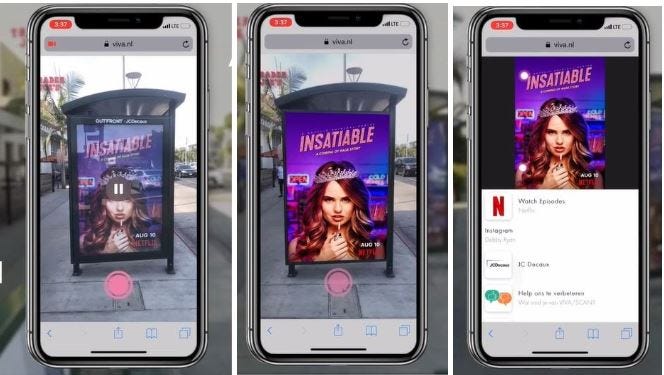The Spatial Web powers storytelling all around us, serving content in the context of our everyday lives — here’s what this means for brands.
When the internet first launched, it was widely thought of as a new messaging tool, but as brands and advertisers soon learned, it was an opportunity to connect with audiences in real-time and in ways that were initially unpredictable.
In 1999, David Bowie accurately envisioned that the internet would forever change our relationship with media, “…[t]he actual context and the state of content is going to be so different to anything that we can really envisage at the moment where the interplay between the user and the provider will be so in sympatico it’s going to crush our ideas of what mediums are all about,” he said.
In the same vein, the Spatial Web marks the evolution of content for the next generation. It’s an entirely new form-factor of the internet that is not designed for ten-second must-watch commercials, banner ads, tags, or notifications at algorithmically defined times and placements. Rather, it’s a tool to bring the best that the world has to offer to consumers at the moment of inspiration. It’s an opportunity to create content that adds value to our lives rather than interrupting us.
The first banner ad by AT&T featured in 1994 had a clickthrough rate of 44%. Would you still click?
Content with Context
Everyday, 95M photos and videos are released on Instagram and 300M photos on Facebook, bombarding us with an endless stream of content. Viewers have become desensitized to the digital clutter, with carefully allocated advertising dollars spent on reaching viewers across social platforms immediately pocketed by the service provider, reaching fake accounts and disinterested audiences.
The Spatial Web has the potential to become a true convenience machine, a utility tool, and an essential part of our social lives. It’s a return to the way we naturally think and interact in a 3D world, powered by cameras with sophisticated image recognition software. This package gives superpowers to 2D content, enabling a new way of integrating experiences into the world around us with content that is not just consumed, but co-created with context.
Image: Geenee IT2 WebAR Campaign with Warner Bros. Try it!
Blending the real and digital world brings the unique situation of the audience to light, connecting to their here and now. Marketing campaigns are no longer one way announcements, but immersive, 360 stories layered on our physical surroundings. These moments offer valuable insights to both creator and consumer, as our chance to enact a new type of advertising that is relevant and useful.
3D Utility
Today, these experiences can be triggered by using your device’s camera through a web browser. There’s no requirement to download an app as an extra step that deters engagement. At the moment of inspiration, WebAR can bring what your audience is looking for into their hands.

Image: WebAR breathes life into 2D content by adding a new layer of interactivity.
For example, Pinterest recently added a feature that allows users to virtually try on products before they buy from retailers like Estée Lauder, Sephora, bareMinerals, Neutrogena, NYX Professional Makeup, YSL Beauté, Lancôme and Urban Decay from L’Oréal. The AR feature is easy to use, and backed by an innovation team that works on every aspect of the virtual product from gloss, shine, color and texture so that when the product arrives at home, the customer can be satisfied with their original perception of what it would be like to use and how it would make them feel, such as confident, stunning and stylish. Higher customer satisfaction and a deeply engaging at home retail experience catalyses grassroots discussion that is comparatively difficult to achieve in traditional 2D campaigns. In this way, AR stimulates all of the 3C’s of camera marketing: conversation, commerce and the customer.
Cutting Through the Clutter
The media industry has long struggled to compete for attention amidst the endless scrolls of photos and videos, constantly attempting to entertain, inspire and capture an audience. The Spatial Web is a chance to address audience fatigue with advertising, transforming it into something we are excited to interact with. This new medium is ours to pioneer.
Until today, we have been looking through a small window into the world that is available, the metaverse, the digital, the imaginable. In many ways, photos and phones, and then film and TV have been a glance into the human imagination. We live in a 3D world that is vibrant and alive, and this is what is possible with the Spatial Web; digital content that augments rather than distracts and content that is tangible, accessible and relatable. It’s a paradigm shift in the way we understand our world, both real and digital, and what it has to offer. It’s a window into a brave new world on the other side of the black mirror.